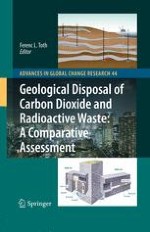2011 | OriginalPaper | Chapter
The Geological Storage of Carbon Dioxide and Disposal of Nuclear Waste in South Africa
Authors : Anthony D. Surridge, Marthinus Cloete, Philip J. Lloyd
Published in: Geological Disposal of Carbon Dioxide and Radioactive Waste: A Comparative Assessment
Publisher: Springer Netherlands
Activate our intelligent search to find suitable subject content or patents.
Select sections of text to find matching patents with Artificial Intelligence. powered by
Select sections of text to find additional relevant content using AI-assisted search. powered by
